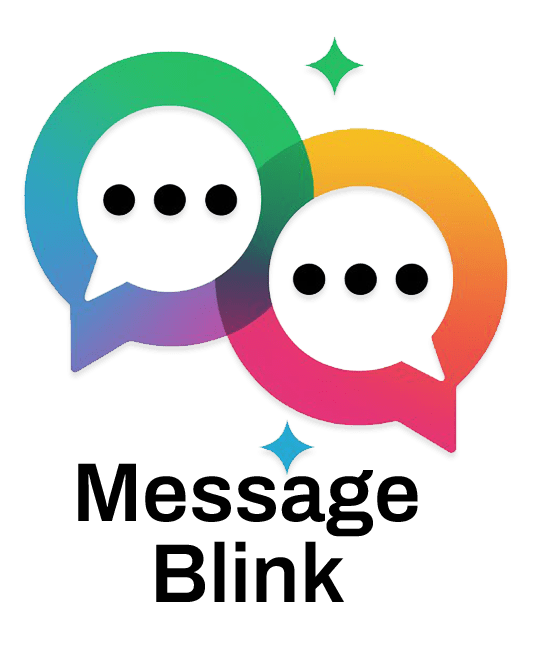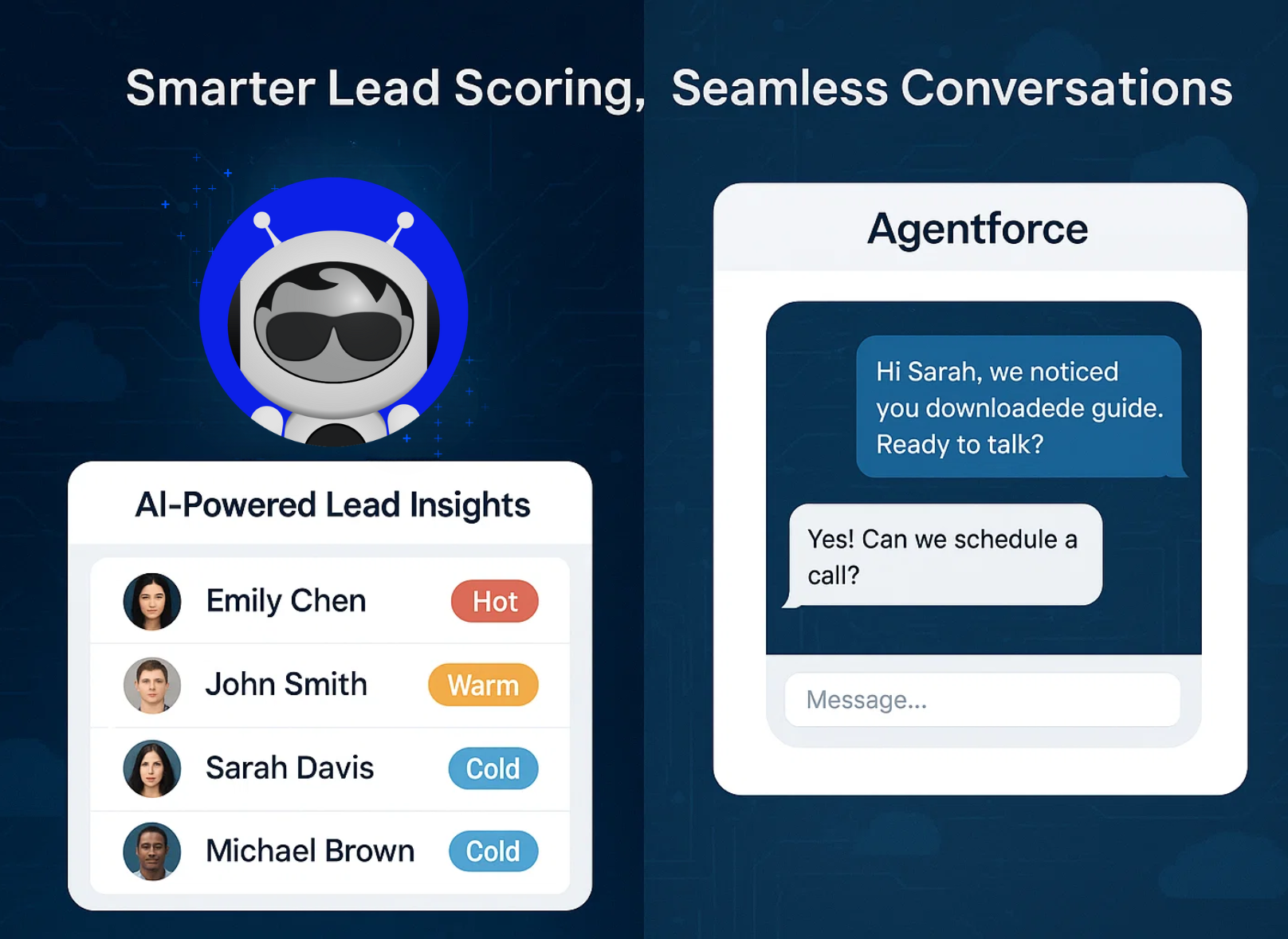Running a US business and drowning in leads? Did you know 40% of hot leads slip through due to manual sorting? Salesforce Agentforce automation saves the day by making lead scoring Salesforce and Agentforce texting a breeze.
This how-to guide gives you simple steps to sort leads, text customers, and boost sales in 2025.
Step-by-Step Guide to Automating Lead Scoring with Agentforce
Step 1: Define Lead Scoring Criteria
Identify attributes that indicate high-potential leads by analyzing existing customer data in Salesforce Data Cloud.
- Demographics: Job title (e.g., CTO), industry (e.g., healthcare), company size.
- Behaviors: Website visits, email opens, webinar attendance, form submissions.
- Example: A medical software company might prioritize “CTOs at mid-size hospitals who filled out a web-to-lead form” with a baseline conversion rate of 50%.
Tip: Use the formula for lead-to-customer conversion rate:
(Number of leads converted / Total number of leads) x 100
Example: If 100 out of 200 leads convert, your baseline is 50%. Assign higher points to attributes with close rates above this threshold.
Step 2: Configure Agentforce in Agentforce Studio
- Access Agentforce Studio: Navigate to Salesforce Setup > Agentforce Studio.
- Create a Lead Scoring Agent:
- Define the agent’s purpose in natural language (e.g., “Score leads based on engagement and demographics”).
- Set triggers: +10 points for email opens, +20 points for webinar attendance, +30 points for demo requests.
- Example Configuration:
Trigger: Lead visits pricing page > Add 15 points
Trigger: Lead submits contact form > Add 25 points
Trigger: Lead is a C-level executive > Add 10 points
- Integrate with Data Cloud: Pull real-time data to update scores dynamically.
- Set Score Limits: Cap total scores at 100 to avoid inflation.
Step 3: Automate Data Cleanup
Agentforce’s AI verifies and enriches lead data:
- Eliminate Duplicates: Merge records with matching emails or phone numbers.
- Fix Errors: Correct misspellings or incomplete fields.
- Enrich Data: Add firmographic details like company size or industry.
Example: A lead with an incomplete profile (e.g., missing job title) is enriched with LinkedIn data, improving scoring accuracy.
Step 4: Prioritize and Route Leads
- Tag High-Intent Leads: Use Agentforce to label leads scoring above 80 as “High Intent.”
- Route to Sales: Automatically notify senior reps via Slack or email for high-score leads.
- Example Workflow:
If Lead Score > 80: Tag as “High Intent” > Notify Senior Sales Rep
If Lead Score 50–80: Add to Nurture Campaign
If Lead Score < 50: Monitor for Future Engagement
Automating Customer Conversations with Agentforce
Step 1: Build Conversational Agents
- Access Agentforce Studio: Create a new agent with a role like “Customer Support” or “Sales Assistant.”
- Define Channels: Embed agents on web chat, email, SMS, or WhatsApp.
- Set Conversational Triggers:
- Example: A lead fills out a form, and Agentforce sends a text via Message Blink: “Thanks for signing up, [Name]! Check out our US deal: [link]. Reply STOP to opt out.”
Sample Script:
Lead: Fills out form
Agentforce + Message Blink: Texts: “Hey [Name], grab our Texas sale! Reply STOP to opt out.”
Step 2: Personalize Interactions
- Use Salesforce Customer 360 to access real-time data (e.g., past purchases, browsing history).
- Example: A New York lead who viewed a sale page gets a text via Message Blink: “Hey [Name], 10% off for NY customers! Book a demo: [link].”
- Sentiment Analysis: Adjust responses based on customer tone (e.g., empathetic for frustrated customers).
Step 3: Automate Workflows
- Use Flow Builder to create automated actions:
- Trigger: Lead asks about pricing > Action: Send personalized email with pricing details.
- Trigger: Lead abandons cart > Action: Send SMS with a discount offer.
- Example Flow:
Trigger: Lead asks “What’s the cost?” > Action: Send email with pricing PDF
- Trigger: Lead mentions “budget constraints” > Action: Offer 10% discount
Step 4: Ensure Compliance
- Einstein Trust Layer: Prevents off-topic responses and ensures data security with zero retention.
- Example: If a customer asks about unrelated topics, Agentforce redirects to relevant FAQs or escalates to a human.
Mapping Agentforce to the Customer Journey
| Stage | Agentforce Feature | Impact |
| Awareness | Blog post engagement tracking, lead scoring | Identifies early interest (e.g., +5 points for blog views) |
| Consideration | Conversational AI, personalized email sequences | Engages leads with tailored content (e.g., product demos) |
| Decision | High-intent lead routing, discount offers | Prioritizes ready-to-buy leads, boosting conversions by up to 40% |
Measuring Success with Agentforce
Track these metrics to evaluate Agentforce’s impact:
- Lead-to-Customer Conversion Rate: (Number of leads converted / Total leads) x 100
- Example: If 120 out of 200 leads convert, the rate is 60%.
- Cost Per Lead (CPL): Total campaign cost / Number of leads
- Example: A $1,000 campaign generating 200 leads has a CPL of $5.
- ROI: (Revenue from converted leads – Campaign cost) / Campaign cost x 100
- Example: If $10,000 revenue comes from a $1,000 campaign, ROI is 900%.
- Conversation Resolution Rate: Measure the percentage of customer queries resolved without human intervention (e.g., 83% with Agentforce).
Case Study: A New York retail store used Agentforce and Message Blink to sort leads and text customers, saving 10 hours a week and boosting sales by 25% in early 2025.


